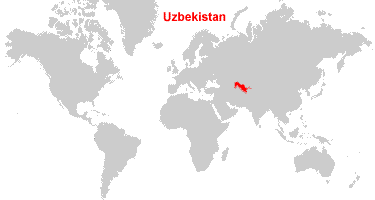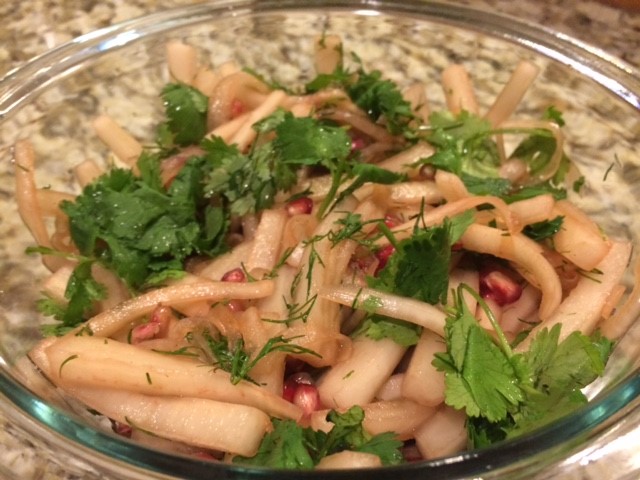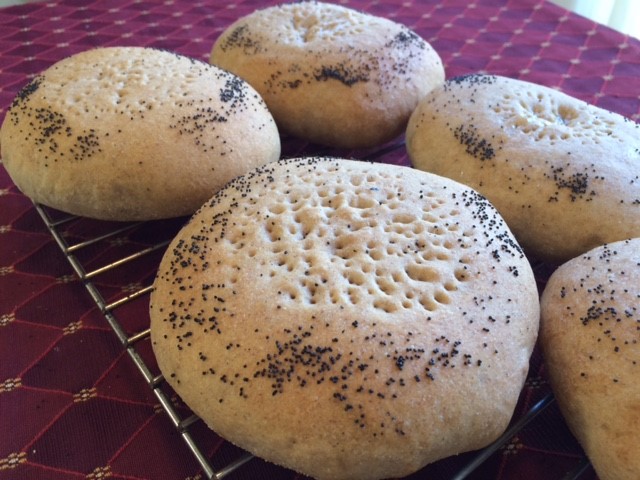

The saying goes, “The Uzbek master chef is able to cook in just one cauldron enough Plov to serve a thousand men.” I am no master chef, but I’m pretty sure I could come close to feeding a thousand men with this weeks’ recipe! The good news is that the end result was very tasty and will make fantastic leftovers!
Pom, Pom, Pomegranate!

The pomegranate is an interesting and delicious fruit. They are a truly SUPER food as they are not only packed full of healthy antioxidants, they are also high in vitamin C and potassium, a great source of fiber, and low in calories. Humans have been enjoying pomegranates for thousands of years as is evidenced by the appearance of the fruit in art, literature, and cuisine. In fact, most biblical scholars believe that the “forbidden fruit” from the tree of knowledge in the Garden of Eden was actually a pomegranate, not an apple.
So, we know the pomegranate is interesting and delicious, but HOW do we eat it? Below is a easy how to guide for harvesting those sweet, delicious, juice covered seeds.
- Pick a ripe pomegranate. Look for a deeply red fruit, free of bruises or gashes, that seems heavy for its size.
- Fill a large bowl with water.
- Take a sharp knife and score the fruit all the way around, from the little crown to the stem several times. The skin of the pomegranate is thin, so you don’t need to cut very deeply.
- Hold the fruit under the water and gently pull the pomegranate apart along the scored lines. You will see lots of clusters of jewel toned seeds.
- Gently separate the seeds from the pith, which is a bit like styrofoam. The seeds will sink to the bottom of the water and the inedible bits will float.
- Skim out the pith and skin of the fruit and collect the washed and ready to eat seeds.
- To store, place the seeds in a container, cover with a damp paper towel, secure the lid, and place in the refrigerator.
Plov with Chicken and Dried Fruit
- 2 Boneless, Skinlesss Chicken Breasts, cut into cubes
- 1 Pinch Saffron, crumbled
- 2 Whole Cardamom Pods
- 1/2 Cup Slivered Almonds
- 3 Tbs Butter
- 1 Large Onion, finely chopped
- 1 Clove of Garlic, smashed
- 1 3/4 Cups Basmati Rice, thoroughly rinsed and drained
- 3 Cups Water, boiling
- 2/3 Cup Raisins
- 1/3 Cup Dried Apricots, cut into thin strips
- 2 Tbs Vegetable Oil
- 1/2 Cup Water
- Salt and Pepper to taste
Step 1: In a large, deep skillet or pan, heat the oil over medium heat. Once the oil is hot, add the onions and cook for 4 minutes, stirring frequently. Lower the heat to low and continue to cook until the onions are soft and brown, about 4 more minutes.
Step 2: Add the rinse and drained rice to the skillet and stir to coat the rice grains in the oil and onions, about 1 minute. Sprinkle the saffron over the rice and add the cardamom pods. Stir to evenly distribute the spices.
Step 3: Pour in the 3 cups of boiling water and then place the garlic clove in the center of the pan. Use a spoon to press it down into the rice.
Step 4: Bring the pan to a boil, cover, and continue to cook on low for 20 minutes.
Step 5: Meanwhile, melt the butter in a skillet over medium high heat. Season the cubed chicken with salt and pepper. Once the butter is melted, add the chicken to the pan along with the raisins, apricots, and almonds. Cook for chicken for 8 minutes total (4 minutes per side) while stirring occasionally. Once the chicken is nice and browned, remove from the pan and set aside.
Step 6: Lower the heat for chicken skillet pan to medium and add 1/2 cup of water to the now empty pan. Deglaze the pan, making sure to scrape up any brown, caramelized bits from the skillet. Set aside.
Step 7: Once 20 minutes has elapsed on the rice pan, add the chicken, fruits, and nuts on top of the rice. Do NOT stir. Pour the chicken skillet pan liquid over the meat and rice, cover, and cook for an additional 5 minutes on low, allowing the chicken to be steamed with the pan sauce.
Step 8: Remove from heat and allow to sit, covered, for 10 minutes.
Step 9: Serve hot.

Daikon Radish, Onion, and Pomegranate Salad (Anor va Piyoz Salati)
- 1 Pomegranate, seeded and evenly split into two bowls.
- 2 Tbs Pomegranate Molasses
- 1 Tbs Lemon Juice
- 2 tsp Honey
- 1/8 tsp Salt
- 1 Large Daikon Radish, peeled and cut into small strips
- 1 Small White Onion, sliced into thin rings
- 1/4 Cup Fresh Dill, chopped
- 1/4 Cup Fresh Cilantro, chopped
Step 1: Pour half of the pomegranate seeds into fine mesh colander, cheese cloth, or strainer. Press firmly to juice the seeds in a bowl. Set the freshly squeezed pomegranate juice aside and discard the pips (hard seeds.)
Step 2: Add the pomegranate molasses, lemon juice, honey, and salt to the freshly squeezed juice and whisk to thoroughly combine.
Step 3: Place the julienned daikon and onion in a large bowl or zip top bag. Pour the dressing over the vegetables and mix thoroughly. Allow the vegetables to marinate in the dressing for 15 minutes.
Step 4: Add the chopped dill and cilantro and mix to combine.
Step 5: Sprinkle the remaining pomegranate seeds over the salad and serve cold.

Uzbek Bread (Tashkent Non)
- 1 Packet Rapid Rise Yeast
- 2 Cups Lukewarm Water
- 2 tsp Salt
- 1 Cup Whole Wheat Flour
- 4 Cups Bread Flour
- 1 Tbs Vegetable Oil
- 2 Tbs Poppy Seeds
- 1/4 Cup Semolina Flour
Step 1: In a large bowl, dissolve the yeast in the lukewarm water with a pinch of bread flour. Set aside for 10 minutes.
Step 2: Add the whole wheat flour and salt to the water and whisk together until smooth.
Step 3: Add the bread flour, a cup, at a time while mixing on low speed (or by hand) until a soft dough is formed. Turn the dough out onto a flour surface and knead for 10 minutes, until the dough is smooth and elastic.
Step 4: Put the dough back into the mixing bowl, cover with a damp tea towel, and allow to rise in a warm, dark place for 2 hours.
Step 5: After the dough has risen, divide into 6 equal sized portions on dough. Dust a large pan with the semolina flour. Roll each dough portion into a ball and press into the semolina flour with the palm of you hand until the dough is a slightly flattened circle about 6 inches across.
Step 6: Cover the loaves with a damp tea towel and allow to rise again in a warm, dark place for 20 minutes.
Step 7: Place a large baking pan upside down in the oven and preheat to 425 degrees.
Step 8: Once the dough has risen again and is read y to be baked, press your fist into the center of each loaf and then pierce the center of the loaf with a fork in a two inch wide circular pattern (in Uzbekistan they have stamps with decorative patterns for this type of bread.) Brush the outside of the loaves with oil and sprinkle poppy seeds around the outside edge.
Step 9: Place the loaves onto the upside down hot pan (you may have to do this in batches,) spray water inside the oven and on the loaves, close the oven door immediately, and bake for 15 minutes.
Step 10: Remove from the oven once the bread is a light golden brown and sounds hollow when tapped. Allow to cool on a wire rack and enjoy!


Fun Fact(s) About Uzbekistan: Uzbekistan is one of only two doubly landlocked countries in the world. (The other one is Liechtenstein.) A doubly landlocked country is one that is landlocked by other landlocked countries. The Muruntau gold deposit is situated in the Kyzyl Kum Desert of Uzbekistan. It is being mined in the world’s largest open pit gold mine with production believed to be around two million ounces per year. That’s $2,687,800,000.00 worth of gold!

